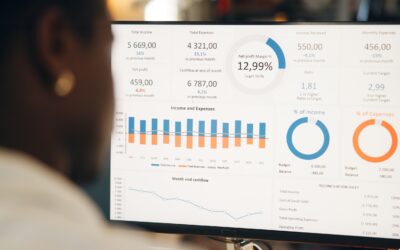When it comes to fundraising technology, nonprofits often face a confusing question: should you invest in a dedicated donor management platform or build a customer relationship management (CRM) system through integrations? The right choice can either simplify your operations—or trap you in a cycle of expensive tools that never quite work together.
If you’re like most nonprofit leaders, your goals are clear: save time, raise more, and keep your donors engaged. But achieving that depends on how your systems handle data. The truth is, your technology stack either multiplies your capacity or quietly drains it.
What Donor Management Software Actually Does
A true donor management system is purpose-built for nonprofits. It’s not just a database; it’s the nerve center for fundraising. It should automatically record every donation, track recurring gifts, and sync supporter information without manual entry.
Think of donor management as the specialized branch of relationship management designed for philanthropy. It focuses on giving patterns, donor retention, campaign results, and the donor journey—from first gift to legacy giving.
A system like Solafund integrates these capabilities directly. You don’t need to piece together third-party tools to get the complete picture. Every donation, tag, and supporter interaction lives in one place, saving you time and eliminating the headaches of syncing data across disconnected systems.
The Case for CRM Integrations
CRM platforms like Salesforce, HubSpot, and Zoho were built for sales organizations first, then adapted for nonprofit use. When configured properly, they can track donor pipelines, automate communication, and manage volunteers or events. However, the key word is “configured.”
To make a CRM work for fundraising, you often need multiple integrations: one for online giving, another for email marketing, another for recurring donations, and another for reporting. Each layer adds complexity—and cost. Most organizations end up hiring consultants or developers just to keep their data flowing correctly.
This problem becomes even more apparent when it’s time to measure donor lifetime value or campaign ROI. Unless every integration is talking perfectly, your reports will have gaps. And when one tool updates or changes its API, the entire chain can break.
That’s why all-in-one platforms are increasingly attractive. As covered in The True Cost of Fundraising, small efficiencies can add up to thousands in annual savings. And in fundraising, simplicity scales better than complexity.
Hidden Costs of Piecing Together CRMs
Every time you connect one tool to another, you introduce three hidden costs: technical debt, staff training, and opportunity loss.
Technical Debt: Integrations require maintenance. When one platform updates, the others may break. Nonprofits without full-time developers end up paying consultants every few months just to keep data accurate.
Staff Training: Even the most talented team struggles when they need to learn multiple dashboards. A staff member trained on one tool might leave, taking undocumented workflows with them. Suddenly, no one knows how the system works.
Opportunity Loss: The time your team spends managing tools is time not spent building relationships. Fundraising is emotional. Technology should support that human connection—not distract from it.
As explored in Why Your Donation Platform Shouldn’t Be a Walled Garden, nonprofits must balance flexibility with focus. A platform that locks you in is dangerous—but so is one that scatters your data across too many places.
All-in-One Systems: A Simpler, Smarter Alternative
An integrated donor management platform like Solafund solves these problems by design. It eliminates the need for expensive plug-ins and disconnected systems by including CRM functionality within the donation platform itself.
Here’s what that means for your nonprofit:
- Unified Donor Profiles: Every gift, note, and interaction appears in one place—no syncing required.
- Automated Data Flow: Donations instantly trigger updates to contact records, email tags, and receipts.
- Lower Overhead: You skip multiple subscription fees, paying one flat platform rate instead of juggling five or six.
- Better Insights: Real-time analytics show which campaigns, channels, or giving levels perform best.
The cost savings alone are significant. Many nonprofits spend $300–$1,000 per month on combined CRM, email, and integration tools. A system where everything is included—like Solafund—can save thousands per year while improving accuracy.
Data Accuracy and Donor Confidence
One of the greatest benefits of a unified donor management approach is accuracy. When systems are fragmented, even small discrepancies create big trust problems. If a donor receives the wrong receipt or a duplicate email, it signals disorganization. Over time, that undermines confidence.
Centralized data ensures that every donor record is current and consistent. When your donation page, CRM, and email system share one database, human error drops dramatically. You gain a single source of truth for every supporter interaction.
For perspective, consider the principles behind Donor Trust and Fees. Donors judge transparency by clarity. When your data is clean and communication is seamless, your credibility rises automatically.
Key Questions to Guide Your Decision
Before choosing your technology path, ask yourself these five questions:
1. How many tools does my team currently use to manage donations, emails, and reporting?
2. Do these systems automatically sync, or does someone manually import data every week?
3. What happens when one platform updates—who maintains the connections?
4. How much am I spending per year across all tools (including hidden integration costs)?
5. If a new staff member joined tomorrow, could they manage everything without outside help?
If any of these answers reveal friction or dependency, it’s time to simplify.
The Strategic Advantage of Built-In Systems
A fully integrated platform doesn’t just make life easier—it enables faster growth. When all your donor data, automation, and reporting live in one ecosystem, you can scale without technical debt.
You’ll onboard faster, report cleaner, and communicate more effectively. And as your campaigns expand, you won’t need to re-engineer your entire tech stack. Everything you need is already in place.
That’s why modern fundraising platforms are shifting from modular to holistic. Nonprofits want tools that “just work,” so they can focus on their mission. With Solafund, you’re not piecing together third-party plugins—you’re running your entire donor experience in one seamless system.
Final Takeaway
You don’t need more software—you need less complexity. The goal isn’t to integrate endless tools, it’s to integrate your mission with your data. All-in-one donor management software gives you that advantage by removing friction, reducing costs, and freeing your team to do what they do best: inspire generosity.
If you’re comparing donor management systems and CRM integrations, the smarter question isn’t “Which one has more features?” It’s “Which one makes it easier for my team to build lasting relationships?” When every dollar and every donor counts, simplicity isn’t a luxury—it’s leverage.




0 Comments